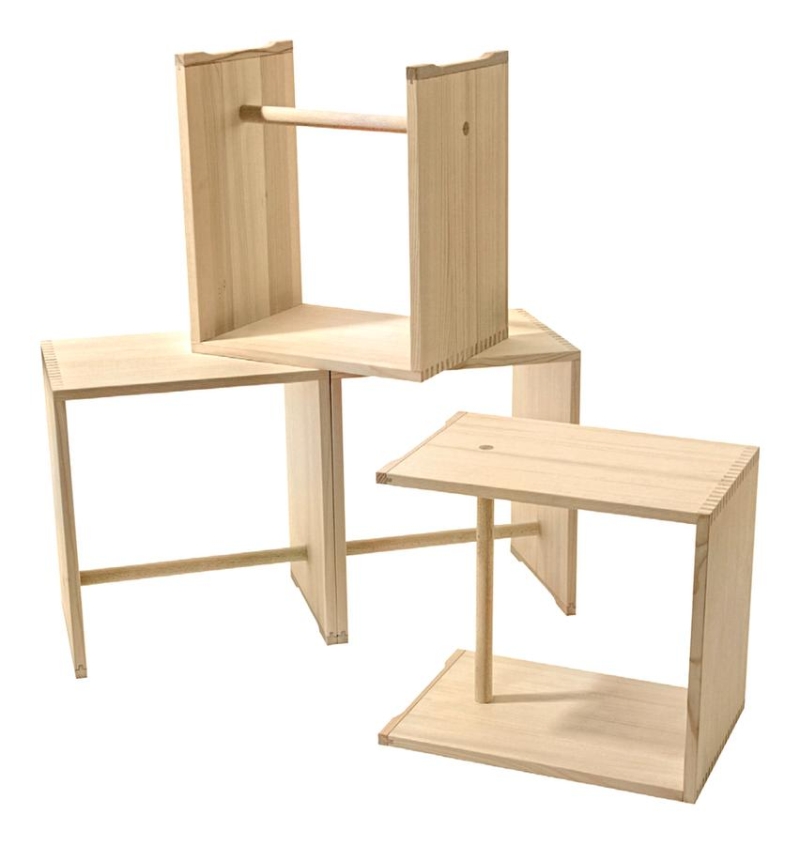Architecture | Bauhaus | Designer | Product
As the prevailing design ideology in post-War Germany die gute Form almost single handedly established the modern German design tradition, and so by extrapolation was responsible for defining the popular understanding of "German Design"
Loosely translatable as "good form", gute Form can be considered as reducing an object, building or anything really down to its very essentials, of creating "a natural product, developed from its function and technical requirements, that in its form represents its purpose and is at the same time attractive". At its most extreme gute Form demands, for one product group: one product. A product that does the job so perfectly, so obviously and with so little fuss as to make any other objects of that type superfluous. Or as Louis H. Sullivan wrote when defining form follows function, "Where function does not change, form does not change"
To all intents and purposes the phrase was first, properly, publicly, used for the photo exhibition "Die gute Form" organised by the architect and designer Max Bill in context of the 1949 Swiss Werkbund Exhibition. Presenting examples of contemporary Swiss produced design that met Bill's criteria, including a cabriolet by Carosserie Graber, a ship's propeller by Escher Wyss Maschinenfabriken AG, ceramics by Fritz & Helen Haussmann and even an Alvar Aalto serving trolley, the idea of the show according to the Swiss Werkbund was "to present the principles of pure, functional, purposeful form..."
Which yes, sounds like a marketing description of the Swiss army knife.
Or Toblerone.
Following the exhibition's premier in Basel "Die gute Form" undertook a tour through Switzerland, Austria and Germany where, in the brutal reality of the post-War need to quickly and efficiently rebuild and restock, the ideas presented found a rich and fertile ground on which to germinate.
In 1953 Max Bill together with Otl Aicher and Inge Aicher-Scholl opened the Hochschule für Gestaltung Ulm, a design school based on the teaching principles of Bauhaus and which was geared towards propagating and teaching gute Form.
Although the HfG Ulm only existed for some 15 years it not only set the standards for German industrial production and inspired generations of German designers, it also gave us one of the best examples of Max Bill's understanding of gute Form - the Ulmer Hocker: an object so infuriatingly simple and obvious it still annoys many observers and consumers today who fail to understand that the geniality of the object is exactly this simple obviousness.
If you don't believe us, try creating something new which is just as simple and just as obvious.

The principles of gute Form however probably reached their purest representation in the work of Dieter Rams for Braun. Although not a Ulm graduate himself, in his early years at Braun Rams worked closely with Ulmer illuminati including Otl Aicher, Hans G. Conrad and most importantly Hans Gugelot. And took the lessons learned from such men to new levels.
In the late 1970s and early 1980s post modernism, and specifically in Germany "Neues deutsches Design", signalled the beginning of the end of gute Form as the defining motif of German design and today, and despite the best efforts of a sizeable cabal within the German Design Council, gute Form is simply one design theory among many.
However, while the concept itself has gone somewhat out of fashion of late many of the basics that underscore gute Form remain important aspects of not only architecture and design, but much more of our understanding and appreciation of such.
As perfectly illustrated by the popularity of Jonathan Ive's design work at apple. Products we are sure Max Bill would eminently approve of. At least in terms of their form.
The Werkbund Berlin have taken this, if you will, legacy of gute Form as the subject for a programme of themed events throughout 2014, including a series of lectures and discussions.
Curated by the Berlin based journalist Gerwin Zohlen on behalf of the Werkbund Berlin, four experts have been invited to present and discuss aspects related to the concept. As the Werkbund Berlin make clear in their press material the aim is not to discuss the theory or history of gute Form, but the contemporary nature of the wider ideals on which the concept stands.
The series begins on Thursday March 27th with Prof. Christian Demand and his thoughts on the "aesthetics of smoothness". In subsequent lectures Detlev Schöttker will explore the history, and being, of "the simple" and Michael Mönninger explores society's fascination with ugliness. The series ends on Thursday June 19th with a talk by Prof Karin Wilhelm on luxury, modern lifestyles and product fetishism.
All lectures begin at 7pm in the Werkbund Galerie, Goethestraße 13, 10623 Berlin. And will take place in German.
Full details can be found at www.werkbund-berlin.de